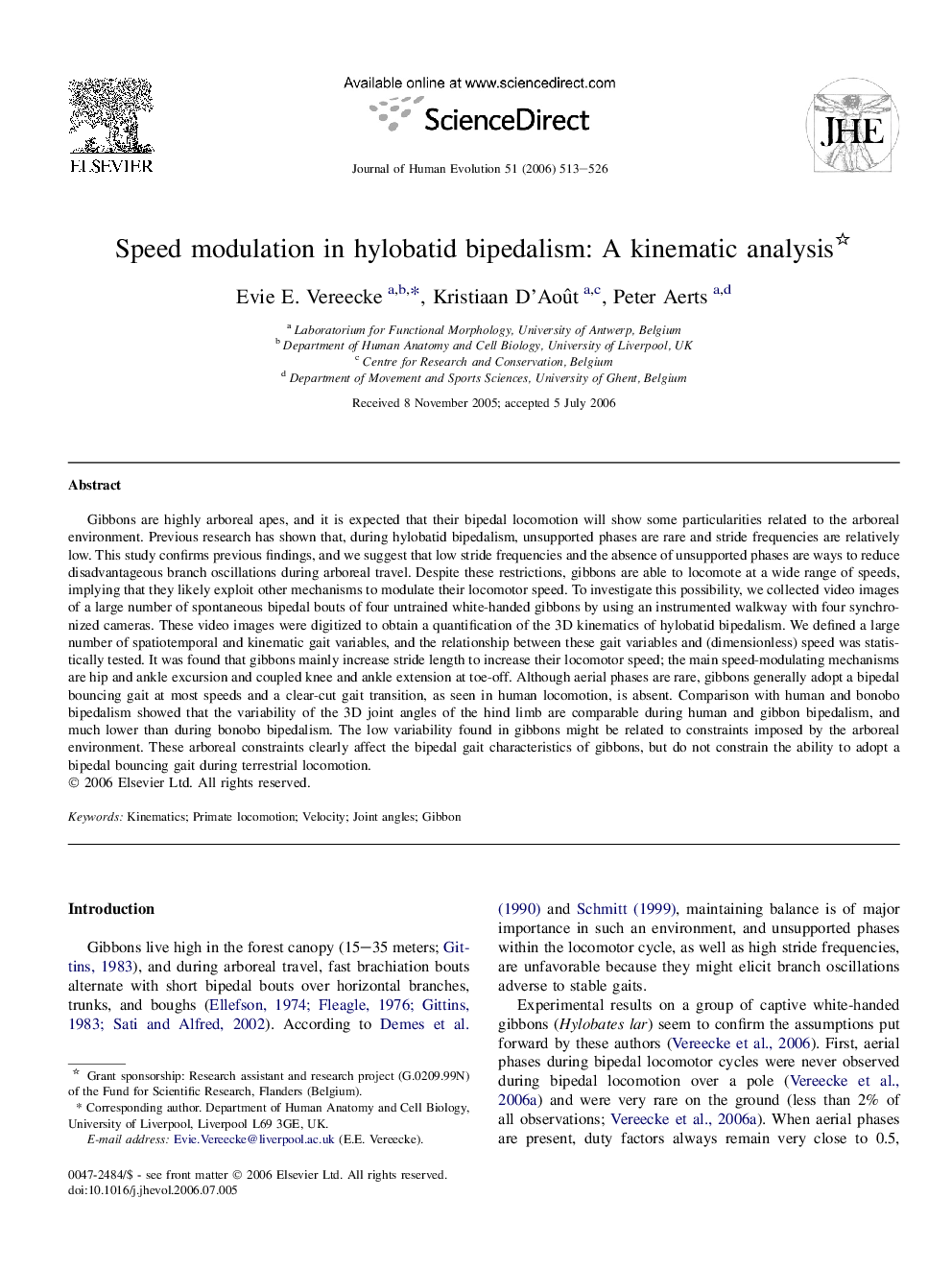| کد مقاله | کد نشریه | سال انتشار | مقاله انگلیسی | نسخه تمام متن |
|---|---|---|---|---|
| 4556976 | 1329516 | 2006 | 14 صفحه PDF | دانلود رایگان |

Gibbons are highly arboreal apes, and it is expected that their bipedal locomotion will show some particularities related to the arboreal environment. Previous research has shown that, during hylobatid bipedalism, unsupported phases are rare and stride frequencies are relatively low. This study confirms previous findings, and we suggest that low stride frequencies and the absence of unsupported phases are ways to reduce disadvantageous branch oscillations during arboreal travel. Despite these restrictions, gibbons are able to locomote at a wide range of speeds, implying that they likely exploit other mechanisms to modulate their locomotor speed. To investigate this possibility, we collected video images of a large number of spontaneous bipedal bouts of four untrained white-handed gibbons by using an instrumented walkway with four synchronized cameras. These video images were digitized to obtain a quantification of the 3D kinematics of hylobatid bipedalism. We defined a large number of spatiotemporal and kinematic gait variables, and the relationship between these gait variables and (dimensionless) speed was statistically tested. It was found that gibbons mainly increase stride length to increase their locomotor speed; the main speed-modulating mechanisms are hip and ankle excursion and coupled knee and ankle extension at toe-off. Although aerial phases are rare, gibbons generally adopt a bipedal bouncing gait at most speeds and a clear-cut gait transition, as seen in human locomotion, is absent. Comparison with human and bonobo bipedalism showed that the variability of the 3D joint angles of the hind limb are comparable during human and gibbon bipedalism, and much lower than during bonobo bipedalism. The low variability found in gibbons might be related to constraints imposed by the arboreal environment. These arboreal constraints clearly affect the bipedal gait characteristics of gibbons, but do not constrain the ability to adopt a bipedal bouncing gait during terrestrial locomotion.
Journal: Journal of Human Evolution - Volume 51, Issue 5, November 2006, Pages 513–526